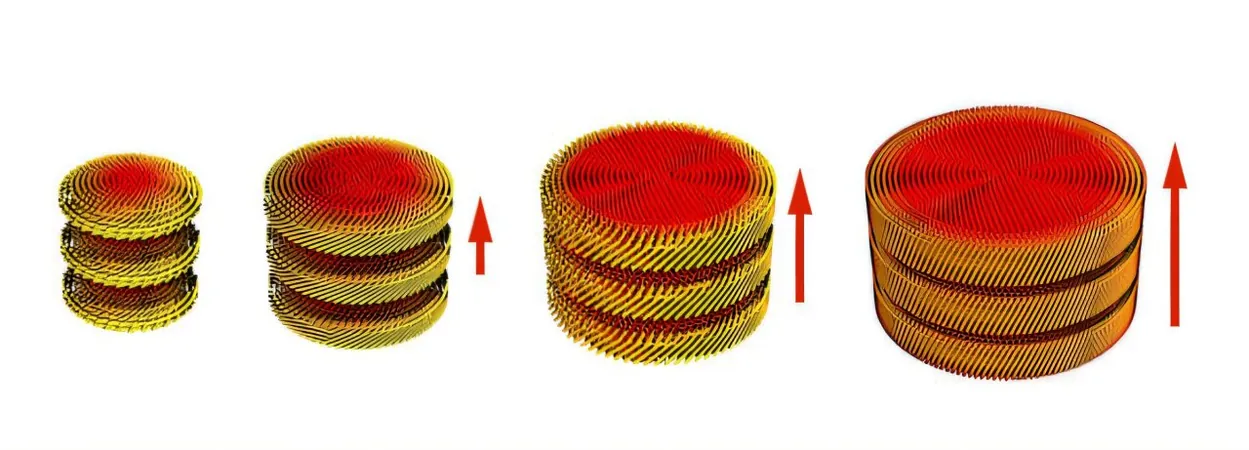
Revolutionary Control: Researchers Manipulate Rod-Shaped Viruses to Form Dynamic Disks Using Magnetic Fields!
2025-03-31
Author: Siti
Groundbreaking Study Published
In a groundbreaking study published in Nature Communications, researchers at RIKEN have unveiled a method to control the self-assembly of rod-shaped viruses by applying a magnetic field.
This innovative advancement could revolutionize artificial self-assembly processes, making them more precise and manageable than current technologies.
Self-Assembly: Nature's Ingenious Process
Imagine a bricklayer meticulously placing each brick in a wall. In contrast, nature employs self-assembly where "bricks" come together spontaneously, forming intricate structures with stunning efficiency.
Such biological self-assembly is increasingly leveraged in the fields of nanotechnology and materials science due to its high precision.
The Size Control Challenge
One significant difference between natural and artificial self-assembly lies in size control.
Natural processes, like the formation of a viral protein shell, stop growing when they achieve a specific shape and size.
Conversely, man-made systems can often lead to structures that keep expanding indefinitely, resulting in a vast array of configurations.
Yasuhiro Ishida, a researcher at the RIKEN Center for Emergent Matter Science, expressed that a primary challenge is to replicate nature’s method of size control in artificial systems.
"Our question is: how can nature control structure size in such highly uncontrollable systems? There must be some mechanism that automatically governs size and shape even in equilibrium," he stated.
Harnessing Rod-Shaped Viruses
Ishida's team has successfully harnessed the unique characteristics of rod-shaped viruses to create a self-assembly system that produces disks with adjustable diameters, driven by a magnetic field.
This twist in design leverages a concept known as chirality, prevalent in many natural systems, which allows for controlled structure formation.
The Role of Chirality
Chirality means that the viruses tend to pack together with a slight twist, which plays a crucial role in determining their size during assembly.
Without a magnetic field, the self-assembly process leads to a twist that constrains the disk's diameter.
However, when a magnetic field is introduced, it diminishes the twisting between neighboring viruses, enabling the disks to enlarge.
By varying the intensity of the magnetic field, researchers can directly manipulate the size of the disks being formed.
Surpassing Nature's Methods
"This approach surpasses what we see in nature, allowing the final growth stage to be adaptively controlled," Ishida highlighted.
A Captivating Discovery
Even more astonishing, when the researchers deactivated the magnetic field after the disks had formed, the disks began to slowly unravel, morphing into beautiful corkscrew-like structures.
Ishida recalled, "I was so surprised when my students showed me the video of this unraveling. It was captivating to observe."
Implications of the Research
The implications of this research could extend far beyond simply controlling virus structures.
Such techniques could potentially lead to breakthroughs in drug delivery systems, bioengineering, and nanomaterials, underscoring the importance of understanding and innovating upon nature's design principles.
Get ready — the future of materials science just got a magnetic twist!


 Brasil (PT)
Brasil (PT)
 Canada (EN)
Canada (EN)
 Chile (ES)
Chile (ES)
 Česko (CS)
Česko (CS)
 대한민국 (KO)
대한민국 (KO)
 España (ES)
España (ES)
 France (FR)
France (FR)
 Hong Kong (EN)
Hong Kong (EN)
 Italia (IT)
Italia (IT)
 日本 (JA)
日本 (JA)
 Magyarország (HU)
Magyarország (HU)
 Norge (NO)
Norge (NO)
 Polska (PL)
Polska (PL)
 Schweiz (DE)
Schweiz (DE)
 Singapore (EN)
Singapore (EN)
 Sverige (SV)
Sverige (SV)
 Suomi (FI)
Suomi (FI)
 Türkiye (TR)
Türkiye (TR)
 الإمارات العربية المتحدة (AR)
الإمارات العربية المتحدة (AR)